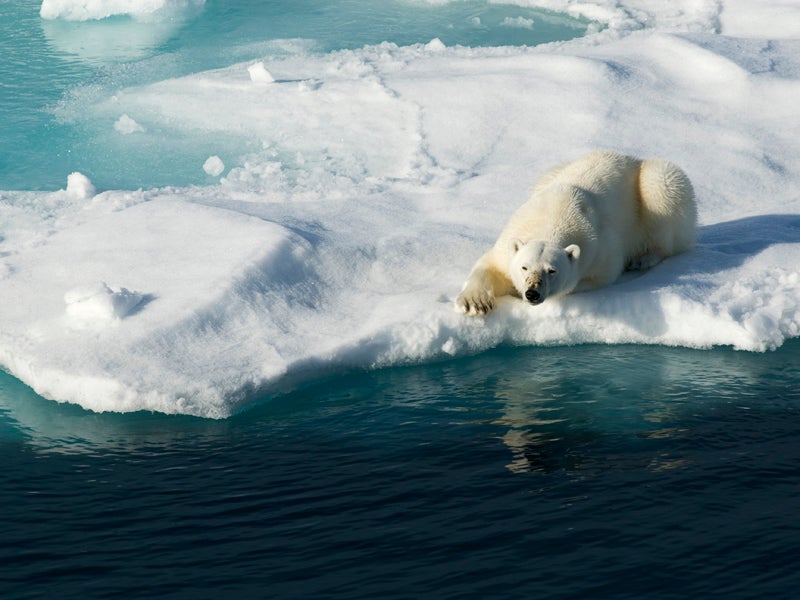To Save Polar Bears, Cut Carbon and Say ‘No’ to Arctic Drilling
When it comes right down to it, there’s only one way to save the sea ice polar bears depend on: cut carbon emissions.

This page was published 10 years ago. Find the latest on Earthjustice’s work.
The polar bear, ursus maritimus, has become a symbol for conservation efforts worldwide. But a recent study by the U.S. Geological Society reaffirms the fragility of this species and its potentially bleak future.
Dwelling both on land and in the ocean, this striking and elusive mammal depends on the annual sea ice that covers the water and archipelagos of the Arctic. The sea ice allows the polar bear to search for its primary food: seals. A rapidly changing climate and rising global temperatures have caused these ice sheets to disappear, interfering with the traditional feeding patterns of the bears. This has led polar bears to desperation and starvation as their habitat literally melts away around them.
A recent report by the U.S. Geological Society indicates that even if greenhouse gas emissions are immediately curbed worldwide, polar bears will still be in peril. “Because carbon emissions accumulate over time, there will be a lag, likely on the order of several decades, between mitigation of emissions and meaningful stabilization of sea ice loss,” society research ecologist Mike Runge told Greenwire.
In the report, the research team describes two potential outcomes. First, if we see a continuous rise in temperature due to unabated carbon emissions, polar bears could reach a “greatly decreased” state, as the summer ice-free period exceeds its typical four-month span. Second, global temperatures and sea ice are linked, so if we see a reduction in emissions the sea ice will eventually return—giving hope to conservationists.
We must keep these scenarios in mind as we craft long-term conservation goals, including protecting bear denning habitats and minimizing the risk of contamination from oil spills. Earthjustice is already working to protect the Arctic Ocean from risky offshore drilling by challenging unlawful decisions to lease vast swaths of the ocean to oil companies, to rush approval of drilling plans like Shell Oil’s Chukchi Sea exploration and to allow harm to walruses from large-scale drilling. We have also been fighting the unlawful decision to rush through a lease to Shell to moor at the Port of Seattle.
Not only does Arctic drilling raise the specter of spills, but burning more fossil fuel raised from the depths prolongs the cycle of warming and sea ice loss. The issue is all the more pressing because Shell’s drilling rigs are heading into Arctic waters as we speak. It’s not too late to raise your voice and tell President Obama to reconsider allowing Shell to drill in diverse Arctic waters.
Check out Frozen Treasure: Defending the Arctic. Take action to prevent arctic drilling that threatens the regions’ animals, people and landscape.
Opened in 1978, our Alaska regional office works to safeguard public lands, waters, and wildlife from destructive oil and gas drilling, mining, and logging, and to protect the region's marine and coastal ecosystems.